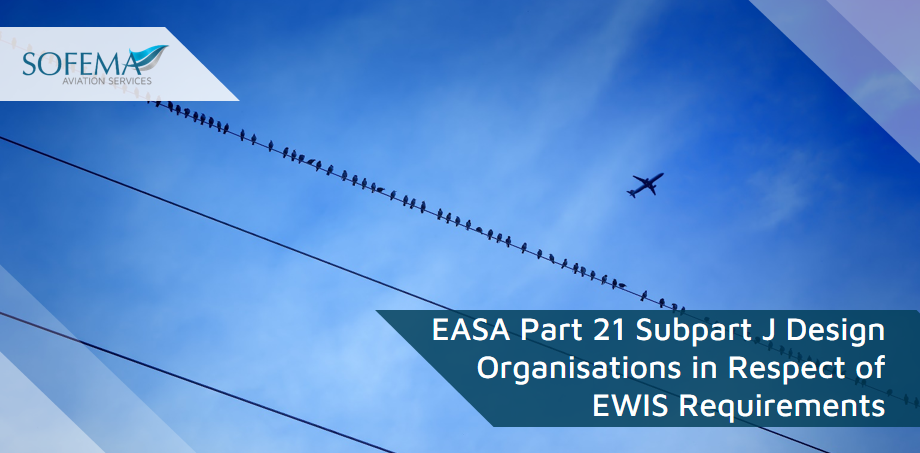Sofema Aviation Services (SAS) Considers the EASA Part 21 Subpart J Design Organisation Key Responsibilities related to EWIS requirements
Introduction
Design Organisations under EASA Part 21 Subpart J hold a key responsibility in ensuring that EWIS is designed, installed, and maintained in a way that minimises the risk of fire, system failure, and safety hazards. This includes integrating EWIS considerations into the Safety Management System, developing enhanced inspection procedures through EZAP, and ensuring compliance with ICA requirements.
- Continuous oversight and feedback are essential to maintaining the integrity of EWIS and addressing emerging safety concerns.
- Electrical Wiring Interconnection Systems (EWIS) play a critical role in the airworthiness, safety, and operational integrity of modern aircraft.
- Under EASA Part 21 Subpart J, Design Organisations (DOA) have defined responsibilities to ensure that EWIS is designed, installed, and maintained in a manner that minimizes safety risks and ensures compliance with regulatory requirements.
Here we consider the key responsibilities of EASA Part 21 Subpart J Design Organisations in relation to EWIS, including specific roles and responsibilities, oversight requirements, and integration with safety management system (SMS) objectives.
EWIS Regulatory Framework and Background
Definition and Scope of EWIS
- EWIS is defined under CS 25 Subpart H as any wire, wiring device, or combination of these, installed in any area of the aircraft for transmitting electrical energy, signals, and data between two or more termination points.
- EWIS includes:
- Wires and cables
- Connectors and accessories
- Termination devices (e.g., relays, circuit breakers)
- Grounding and bonding devices
- Clamps and other support devices
- Protective materials (e.g., insulation, conduits)
Regulatory Basis
- The requirement for EWIS design and maintenance comes from:
- CS 25.1701–25.1733 (Certification Specifications)
- AMC 20-21 and AMC 20-22 (Acceptable Means of Compliance)
- CRI H-01 (Instructions for Continued Airworthiness)
- EAPAS/FTS (Enhanced Airworthiness Programme for Airplane Systems/Fuel Tank Safety)
Safety Concerns and Historical Context
- Swissair Flight 111 (1998): Fire caused by electrical arcing in the in-flight entertainment system wiring.
- TWA 800 Accident (1996): Fuel tank explosion due to wiring fault.
- BA 737-436 (2002): Fire caused by wire chafing due to incorrect routing and clamping.
Key Responsibilities of a Part 21 Subpart J Design Organisation
EWIS Design and Certification
Design Organisations are responsible for:
- Ensuring that all EWIS components are designed and installed to meet CS 25 Subpart H requirements.
- Demonstrating that the EWIS design does not present a risk to aircraft safety through:
- Adequate physical separation between EWIS and other aircraft systems.
- Protection against mechanical damage, contamination, and fire.
- Protection from hydraulic, fuel, and oxygen systems.
- Electrical isolation between independent power sources.
- Fire and smoke suppression measures.
Design Considerations Include:
- Chafing and vibration protection.
- Prevention of contamination by fluids (e.g., hydraulic oil, fuel).
- Wire segregation to avoid electrical interference.
- Separation from fuel, hydraulic, and oxygen systems.
Instructions for Continued Airworthiness (ICA)
Under CRI H-01, the DOA must develop ICA covering:
- Maintenance and inspection requirements.
- Identification of EWIS zones.
- Identification of combustible materials near EWIS.
- Defined tasks and inspection intervals.
- Instructions for protection and contamination control during maintenance.
EWIS Safety Assessments
DOAs are responsible for performing systematic safety assessments under CS 25.1705:
- Assessment of failure modes and associated hazards.
- Risk mitigation strategies.
- Design modification to prevent failures.
- Compliance with CS 25.1309 safety levels:
- Catastrophic: Probability < 10⁻⁹
- Hazardous: Probability < 10⁻⁷
- Major: Probability < 10⁻⁵
Human Factors and EWIS Maintenance Practices
Human factors contribute to 70–80% of aircraft accidents.
- DOAs must incorporate human factor principles into EWIS design and maintenance instructions:
- Prevent the needling of wires.
- Ensure proper wire handling.
- Encourage “clean as you go” and “protect as you go” philosophies.
- Training of maintenance personnel on EWIS best practices.
Enhanced Zonal Analysis Procedure (EZAP)
DOAs must develop and integrate EZAP into maintenance programs:
- Identification of zones where EWIS is installed.
- Identification of combustible materials.
- Inspection task development for each zone.
- Enhanced inspection techniques for EWIS degradation:
- General Visual Inspection (GVI)
- Detailed Inspection (DET)
Certification of Modifications and Repairs
For Supplemental Type Certificates (STC), DOAs must:
- Perform safety assessments on modified EWIS.
- Demonstrate continued compliance with CS 25 Subpart H.
- Provide ICA updates and training on new configurations.
Oversight and Monitoring
Internal Oversight
- DOAs must establish an internal quality assurance program to monitor:
- Design conformity.
- Safety assessment accuracy.
- Compliance with ICA and EZAP.
- Human factor-related errors.
External Oversight
- EASA oversight includes:
- Initial design approval audits.
- Monitoring of safety performance and incident reports.
- Verification of ICA and maintenance documentation.
- Audits of compliance with AMC 20-21 and AMC 20-22.
Integration with Safety Management System (SMS)
SMS Objectives
Design organisations must integrate EWIS compliance with SMS goals:
- Hazard Identification and Risk Management:
- Identification of EWIS failure risks.
- Implementation of design improvements to eliminate or mitigate risks.
- Safety Performance Monitoring:
- Review EWIS failure data.
- Identify trends and implement corrective actions.
- Safety Promotion:
- Ensure maintenance personnel are trained in EWIS best practices.
- Encourage a “speak up” culture regarding EWIS issues.
Feedback and Continuous Improvement
Design organisations must establish a closed-loop feedback system:
- Collect data from operators and maintenance organisations.
- Identify weaknesses in EWIS design.
- Implement corrective actions through design changes or ICA updates.
Specific Roles and Responsibilities
Head of Design Organisation
- Ensure overall compliance with CS 25 Subpart H and AMC 20-21/22.
- Approve EWIS design changes and ICA.
EWIS Design Engineer
- Develop wiring routing plans.
- Ensure adequate separation and protection from other systems.
- Perform EWIS safety assessments.
Certification Manager
- Manage the EWIS certification process.
- Ensure documentation meets EASA requirements.
Compliance Verification Engineer (CVE)
- Independently verify EWIS design conformity.
- Approve safety assessments and inspection procedures.
Quality Assurance Manager
- Ensure EWIS compliance during production and modification.
- Monitor internal audits and findings.
Next Steps
Follow this link to our Library to find & download related documents for Free.
Sofema Aviation Services (SAS) and Sofema Online (SOL) provide classroom, webinar and online training covering all aspects of EWIS. Please see the websites or emailteam@sassofia.com.
Tags:
Human Factors, EWIS requirements, Regulatory Framework, EASA Part 21 Subpart J, SAS blogs, Design Organisations, Continued Airworthiness (ICA), EWIS Safety Assessments, EWIS Maintenance Practices, Enhanced Zonal Analysis Procedure (EZAP), Oversight and Monitoring




